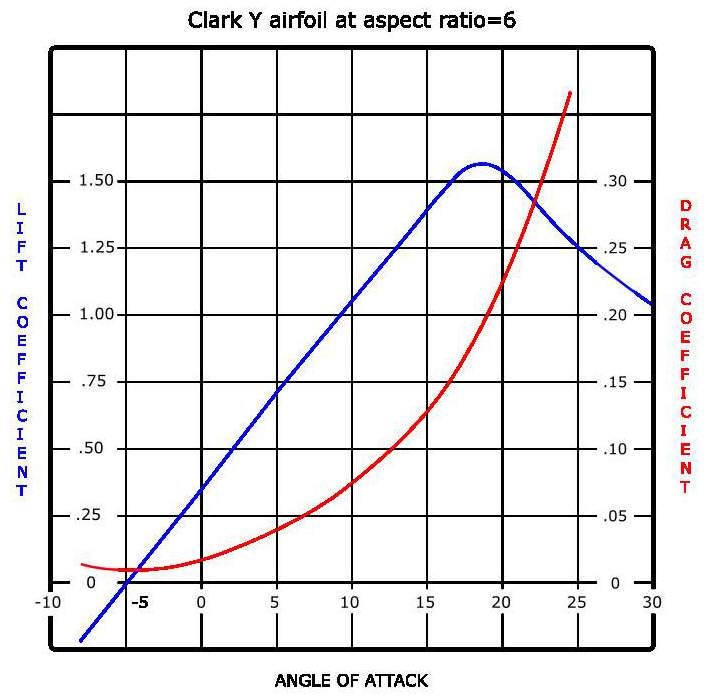

Considering the lift and stability and requirements of the airfoil at various stall patterns, GEMINI and NACA0012 are considered for the wing and tail airfoils, respectively. The demerit of Xfoil compels us to use a 3-dimensional CFD analysis tools along with fluent so as to overcome it.
CLARK Y AIRFOIL VERIFICATION
Later, the verification of Xfoil is conducted by comparing the in hand wind tunnel data with the results of the Xfoil. Selection of airfoil is done using 2-dimensional computational fluid dynamic (CFD) analyses. Based on literature survey, analysis is piloted with four main design parameters using design concepts. The first step is to identify the design of the wing and the requirements for the analysis and then to formulate all the related concepts. The new airfoil designs are being hampered by the aerodynamic attributes at low Reynolds number flows. People use them because they're "good enough" for most applications and well documented build an airplane with, say, a 23012 airfoil and you'll be able to predict the flight characteristics with reasonable accuracy even with today's computational capabilities.The design and analysis of airfoil of an UAV at a low Reynolds number has been discussed in this paper.

But while many of the shapes would perform horribly as an airplane wing, some of them turned out to be pretty good indeed. They were not necessarily intended as airfoils for an actual aircraft, they weren't striving to create airfoils with any specific characteristics, instead they were testing a wide range of shapes to expand the general understanding of aerodynamics. NACA tested a wide range sections in each series, from razor thin to absurdly thick, with varying cambers. The 6-series so-called "laminar flow" sections took it even further, with airfoils very high lift/drag ratios, but only in a narrow AOA range.
CLARK Y AIRFOIL SERIES
Later, the 5-digit series was created from mathematical analysis. The NACA 2412 is almost exactly the same as the Clark Y. They created a mathematical model for the thickness distribution of those airfoils, then created a whole series of other airfoils by using that thickness distribution with other thicknesses and camber shapes. The NACA engineers observed that the Clark Y and Gottingen 398 (IIRC) performed better than many other airfoils. I have often wondered if existing designs could benefit from the reapplication of Riblett airfoils, but this is best applied to a new aircraft built from scratch instead of an existing airplane.Ĭlick to expand.Right. The Ribblet airfoils are supposed to have gentle stall characteristics and maintain all of the pros of the NACA airfoils they are based on.

He found certain flaws in the various series of airfoils that could be corrected, and set out to correct these flaws and create a true catalog of practical airfoils that can be used in GA aircraft designs. Harry concluded the NACA airfoils were never intended to be used as is on flying aircraft, but instead were intended to give performace guidance so that aircraft designers could roll their own airfoils from scratch for each application. it has been several years since I studied his work, so I am commenting based on my memory. Here is a link to an article about him in Kitplanes. If you are seriously interested in airfoils you should read Harry Riblett's book on GA airfoils.


 0 kommentar(er)
0 kommentar(er)
